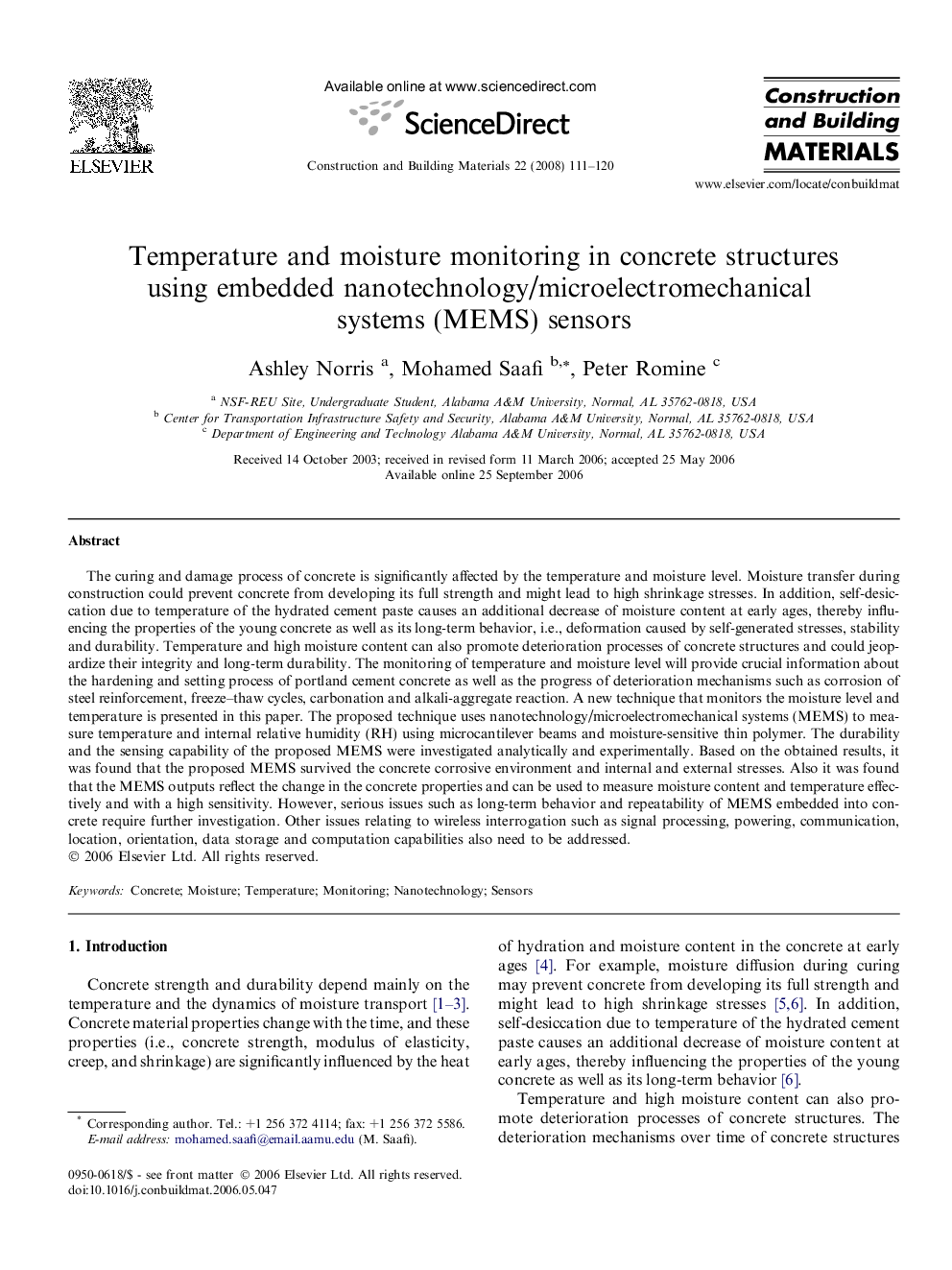| کد مقاله | کد نشریه | سال انتشار | مقاله انگلیسی | نسخه تمام متن |
|---|---|---|---|---|
| 261044 | 503679 | 2008 | 10 صفحه PDF | دانلود رایگان |

The curing and damage process of concrete is significantly affected by the temperature and moisture level. Moisture transfer during construction could prevent concrete from developing its full strength and might lead to high shrinkage stresses. In addition, self-desiccation due to temperature of the hydrated cement paste causes an additional decrease of moisture content at early ages, thereby influencing the properties of the young concrete as well as its long-term behavior, i.e., deformation caused by self-generated stresses, stability and durability. Temperature and high moisture content can also promote deterioration processes of concrete structures and could jeopardize their integrity and long-term durability. The monitoring of temperature and moisture level will provide crucial information about the hardening and setting process of portland cement concrete as well as the progress of deterioration mechanisms such as corrosion of steel reinforcement, freeze–thaw cycles, carbonation and alkali-aggregate reaction. A new technique that monitors the moisture level and temperature is presented in this paper. The proposed technique uses nanotechnology/microelectromechanical systems (MEMS) to measure temperature and internal relative humidity (RH) using microcantilever beams and moisture-sensitive thin polymer. The durability and the sensing capability of the proposed MEMS were investigated analytically and experimentally. Based on the obtained results, it was found that the proposed MEMS survived the concrete corrosive environment and internal and external stresses. Also it was found that the MEMS outputs reflect the change in the concrete properties and can be used to measure moisture content and temperature effectively and with a high sensitivity. However, serious issues such as long-term behavior and repeatability of MEMS embedded into concrete require further investigation. Other issues relating to wireless interrogation such as signal processing, powering, communication, location, orientation, data storage and computation capabilities also need to be addressed.
Journal: Construction and Building Materials - Volume 22, Issue 2, February 2008, Pages 111–120